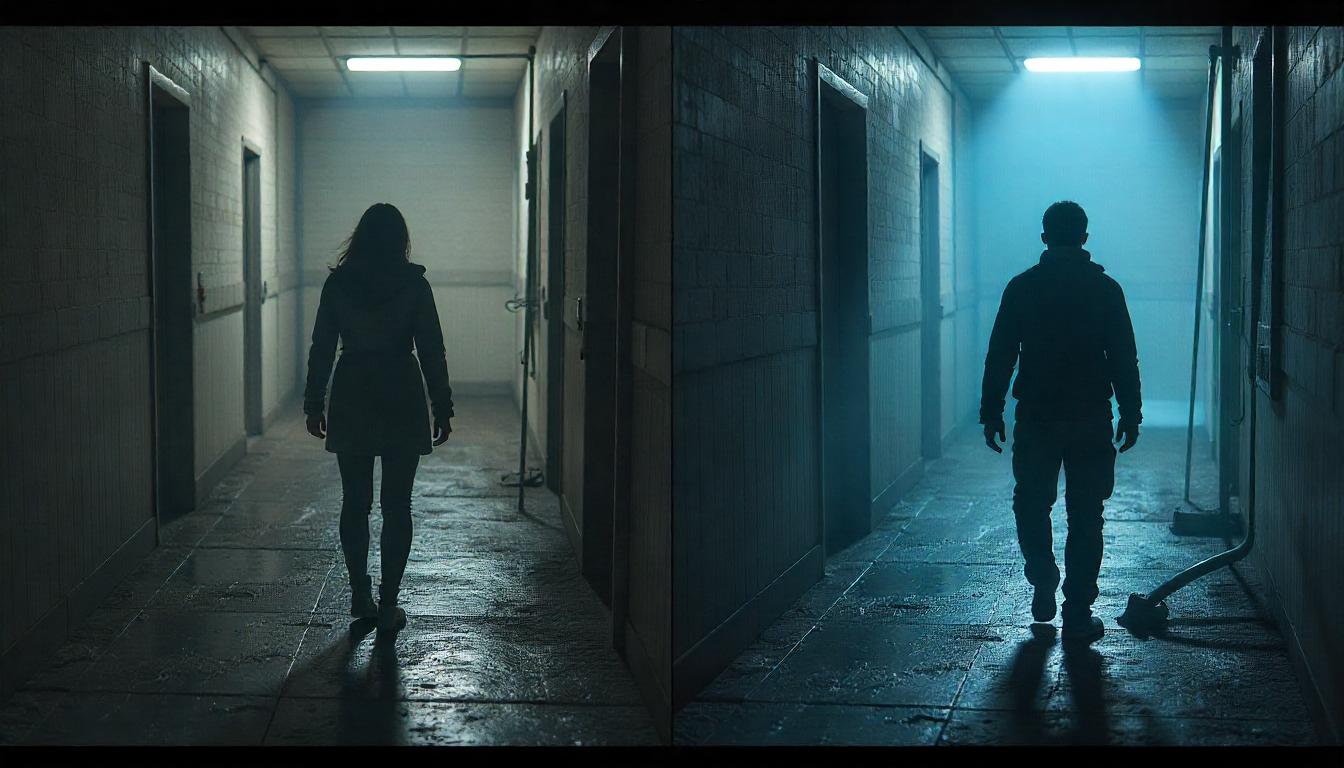The Resident Evil franchise has always been synonymous with fear, evolving over the years from slow, methodical horror to action-packed survival. In this battle of terror, the Resident Evil 4 Remake and Resident Evil Village emerge as two titans, each offering their own brand of horror. But how do they compare when it comes to their ability to truly scare the player? Let’s take a deep dive into the chilling moments, the grotesque enemy designs, and the psychological versus action-driven fear that these two games serve up.
Resident Evil 4 Remake: The Return of Survival Horror
The Resident Evil 4 Remake successfully revives the 2005 classic, amplifying its horror elements with a stunning visual upgrade and reimagined mechanics. While the original game leaned more toward action, this remake steps back into the realm of survival horror with a more intense atmosphere and a chilling focus on tension-building.
From the moment Leon S. Kennedy steps off the helicopter and into the eerie, fog-clad village, it’s clear that this isn’t just a game; it’s an immersive nightmare. The atmosphere plays a huge role here—sunlight is rare, and the shadows seem to hide more than just lurking enemies. The sound design is meticulous, with the distant creaks of old houses and the whispers of unseen villagers adding to the feeling of being watched.
Key horror moments in Resident Evil 4 Remake take full advantage of its setting. Take the first encounter with the “Ganados” (the possessed villagers). At first, they appear in small numbers, manageable, but as the game progresses, you realize that you can’t always run or shoot your way out. These enemies are relentless, and they often appear from out of nowhere, forcing you to navigate narrow, claustrophobic corridors while keeping an eye out for traps and ambushes. The unpredictability of the Ganados is terrifying, as you never know when or where they’ll strike.
Then, there’s the infamous chainsaw-wielding Dr. Salvador, whose first appearance escalates the tension immediately. The roaring sound of his chainsaw as he charges at Leon is enough to make even the most hardened player freeze in terror. It’s not just the visual horror of Salvador’s grotesque form that’s terrifying, but the sheer panic that comes with his pursuit. One wrong move, and he’s slicing you to pieces in an instant.
But what truly elevates Resident Evil 4 Remake into a masterclass of fear is the balance it strikes between horror and action. Unlike the original game, which favored a more run-and-gun approach, this remake emphasizes vulnerability. Ammo is scarce, health is hard to come by, and the enemies are relentless. You feel like an underdog in this fight against the grotesque, a feeling that only grows as you descend into more bizarre and horrifying locations, from the nightmarish caves to the sprawling castle. The mixture of grotesque enemy design and relentless pursuit creates a steady, mounting tension that grips you throughout.
Resident Evil Village: The Art of Psychological Horror
In contrast, Resident Evil Village dials up the psychological horror and gothic imagery, blending the fear of the unknown with larger-than-life set pieces. The game’s narrative follows Ethan Winters’ search for his kidnapped daughter, Rose, through the creepy, snow-covered village and its surrounding areas, including a cursed castle, a labyrinthine factory, and a grotesque swamp. This game builds its horror around the psychological manipulation of its characters, coupled with the larger-than-life enemies and the distorted reality that players encounter.
The game’s sense of dread is immediate, starting with the haunting scenes in the village itself. As you explore the eerie, isolated settlement, you come across countless signs of decay, abandoned homes, and bloodstains, setting the tone for what’s to come. Yet, Resident Evil Village excels in its use of psychological terror—often, enemies don’t just chase you; they play with your mind. One of the standout moments occurs when you encounter Lady Dimitrescu, the towering vampire woman. She stalks the player in her castle, appearing unexpectedly and forcing Ethan to navigate treacherous hallways while evading her terrifying presence. Every encounter with her forces you to reconsider how you approach exploration: Will you face her head-on, or will you hide and pray she doesn’t find you?
The game’s enemies are a mishmash of the grotesque, from the Lycans, wolf-like creatures that make every nightmarish encounter feel like a battle for survival, to the strange, twisted creations lurking in the corners of the map. The Lady Dimitrescu encounter alone is more than just a fight—it’s a chase that makes your skin crawl, as her immense figure appears unexpectedly around corners or in windows, the terrifying noise of her high heels echoing as you try to hide.
The fear factor in Resident Evil Village extends beyond simple jump scares. The game’s atmosphere is one of isolation and tension, where you never feel safe for long. Even in moments when you think you’ve escaped an enemy’s grasp, you never know when a new threat will emerge, each one more twisted than the last. The contrast of psychological horror and sudden action keeps the player constantly on edge. When you think you’ve figured out the pattern of an enemy or a puzzle, Village throws in an unpredictable element that forces you to rethink your strategy.
Psychological Horror vs. Action Horror: The Core of Fear
The core difference between Resident Evil 4 Remake and Resident Evil Village lies in the balance of psychological versus action horror. Resident Evil 4 Remake leans heavily on survival horror, constantly making you question whether you’ll have enough resources to survive. The enemies are relentless, and the game traps you in an environment where fear builds through tension and dread. It’s the fear of running out of time, ammo, or health that makes every corner turn into a nightmare. The game’s pacing focuses on ambushes and claustrophobic combat, where every step forward brings new terror.
On the other hand, Resident Evil Village plays with the mind. While it’s full of action-packed sequences, it’s the slow, haunting build-up that leaves you unsettled. The psychological horror is driven by the constant looming presence of terrifying figures, the twisted folklore of the village, and the mental toll it takes on Ethan. While the action is intense, it’s the atmosphere—the dread of not knowing what comes next—that creates a lasting sense of fear.
Verdict: Which Game Wins the Fear Factor?
When it comes to sheer terror, Resident Evil 4 Remake and Resident Evil Village both succeed in their own unique ways, but they cater to different types of horror experiences. If you’re someone who thrives on atmospheric tension, survival horror, and the creeping realization that danger is always just around the corner, Resident Evil 4 Remake offers a far more spine-chilling experience. The unpredictability and claustrophobic nature of its encounters create a palpable sense of fear throughout.
However, if you prefer psychological horror, gothic imagery, and a story that slowly builds dread while throwing monstrous adversaries into the mix, Resident Evil Village will leave you more unnerved. Its terrifying enemies and haunting settings make it a game that lingers in your mind long after you’ve put it down.
In the end, the battle for fear might be won by the Resident Evil 4 Remake, thanks to its constant push to make you feel vulnerable in an unforgiving world. Yet, Resident Evil Village will undoubtedly haunt your dreams, its psychological grip squeezing tighter with every encounter.
Whichever you choose, both games will remind you that in the world of Resident Evil, terror never really ends.






Leave a Reply